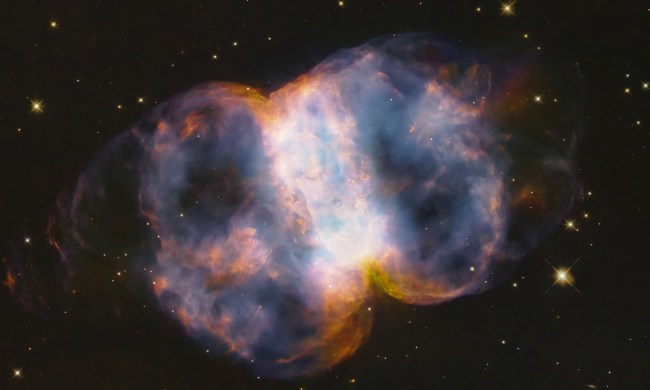This week’s image from the Hubble Space Telescope shows the galaxy M91, a barred spiral galaxy in the constellation of Coma Berenices. It is relatively nearby to us, at 55 million light-years away, and it is part of our local supercluster. The M in its name stands for Messier, after the French astronomer Charles Messier who is famous for his catalog of astronomical objects he produced in the 1770s and 1780s. The designations of the objects he cataloged, from M1 to M110, are still used by astronomers today.
While it is undeniably a handsome galaxy and shows the classic bar or bright region of dust and gas at its center where stars are formed, this particular galaxy was observed by Hubble in order to learn about the monstrous black hole at its center. Like almost all galaxies, including the Milky Way, M91 has a supermassive black hole at its heart. The mass of M91’s supermassive black hole was calculated using Hubble data in 2009 and found to be enormous, at between 9.6 and 38 million times the mass of our Sun.

“While archival Hubble data allowed astronomers to weigh M91’s central black hole, more recent observations have had other scientific aims,” Hubble scientists write. “This observation is part of an effort to build a treasure trove of astronomical data exploring the connections between young stars and the clouds of cold gas in which they form. To do this, astronomers used Hubble to obtain ultraviolet and visible observations of galaxies already seen at radio wavelengths by the ground-based Atacama Large Millimeter/submillimeter Array.”
This image was collected as part of the Physics at High Angular resolution in Nearby GalaxieS with the Hubble Space Telescope, or PHANGS-HST project. Previous Hubble images collected for this project include the spiral galaxy NGC 2835 and the spiral galaxy NGC 4571.



